Polymers Recycling
The European annual consumption of plastic materials has increased from 24.6 Mt in 1993 to about 50 Mt in 2012 (nearly half being polyolefins) so that Europe is faced with the daunting challenge of managing millions of tons of waste plastics. At the same time, polymer recyclers and manufacturing industries have a problem in buying feed materials and secondary polymers of sufficient volume and consistent quality, as a result of the strong pull of China and India on raw material resources. In addition, the production and use of plastics has a range of environmental impacts because about two kg oil are needed to produce one kg plastic.
Today, Polyolefin recyclers focus mainly on the relatively pure post-industrial since these wastes can be made into high-purity product materials by existing and cost-effective process technology.
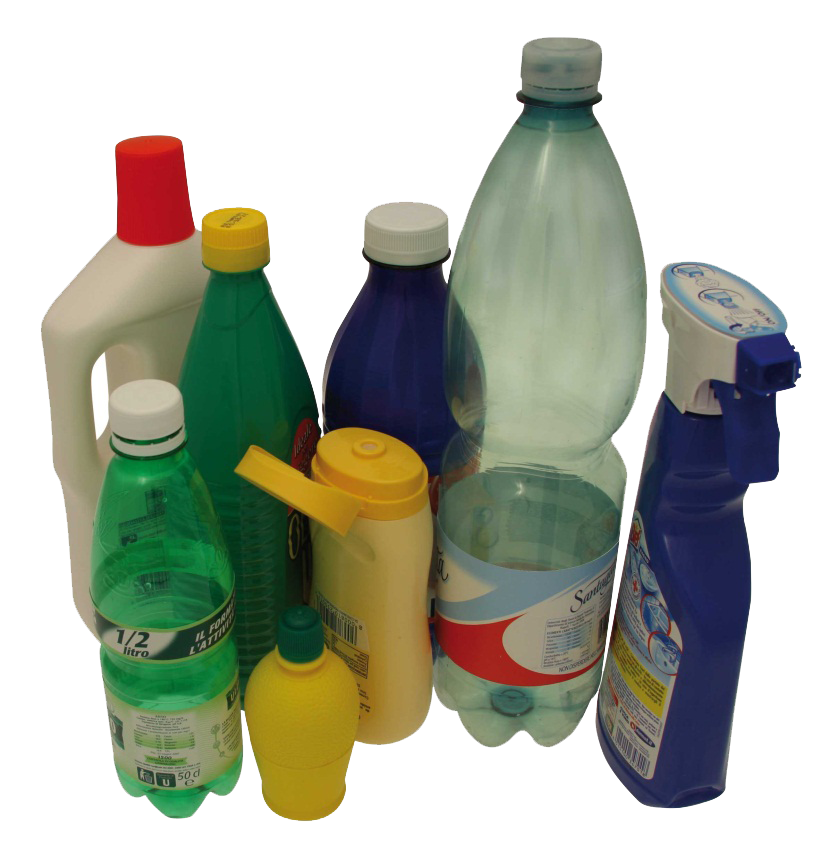
Postindustrial wastes are increasingly exported outside the EU, however, and so the European Polyolefin recycling industry and their end-users are forced to look for alternative resources. In principle, post-consumer wastes, such as household waste, Construction and Demolition Waste (CDW), Waste from Electric and Electronic Equipment (WEEE), and Automotive Shredder Residues (ASR) provide such a resource. They are from five to ten times larger reservoir of Polyolefin’s than do post-industrial wastes, but these wastes are also much more complex mixtures of materials and hence much more difficult to recycle.
In order to improve the economy of plastics recycling, the European Commission granted an FP7 project (W2Plastics) to a consortium of research institutes and industries in 2009. This W2Plastics project focuses on the separation of polyolefins, and more specifically on packaging polyolefins, which represent approximately 30% of the total polymer production.
Article: http://horizon-magazine.eu/article/magnetic-attraction-recycling-plastics_en.html
The aim of the Delft research is to create an innovative process for the purification of polymers from mixtures of post-consumer polyolefin wastes. The W2Plastics process separates such mixtures into different grades of polyethylene (PE) and polypropylene (PP) using magnetic density separation assisted by on-line quality control by hyperspectral imaging (developed by partner La Sapienza Universita’ di Roma and DV Tecnologie d’avanguardia, srl).
MDS Redox
At the heart of the separation process, the Magnetic Density Separator (MDS) cuts the shredded mixed input waste into four different density ranges of polymer products and a fifth product, or residue, that is either much heavier than water (e.g. metals, glass etc.) or much lighter than water (e.g. foam, wood), depending on the type of application. The input typically has a particle/flake size between 1 mm and 10 mm, and a flake thickness of 0.3 mm to 3 mm. Capacity depends on the average flake thickness but is of the order of 3 tons per hour for an industrial unit with an investment cost of approximately 2 million euros.
MDS movie
Principle of MDS technology: the newly developed MDS technology consists of a sink-float process using the difference in densities between Plastics mixtures (PP, LDPE, HDPE, PS, PVC, etc. and their contaminants). Since all of these materials have quite similar densities smaller of higher than water, a liquid having a density lower or higher than water is needed to separate them. In case a mixture of plastics having densities smaller than water need to be separated, a simplified layout of the prototype comprises a ferrous liquid and a magnet placed above it. As a result, the liquid below the magnet is affected by the magnetic field and by the gravitational field as well. Therefore its density decreases and so effectively becomes lighter (less than water) going upward to the magnet. A density gradient is established from the magnet downward. As the effect of the magnetic field diminishes away from the magnet, the effective density of the liquid increases. Thus far from the magnet where the magnetic field can be ignored, the density of the liquid is the water density plus the ferromagnetic material (because of the low concentration it can be considered as water). Since different materials become lighter in weight than the liquid at different distances from the magnet, they can be separated by each other as they will be floating at different locations. At the points where the density of the ferrous medium equals the density of PE chips, they remain suspended. The same will happen at a farther point for the chips made of PP. The net effect of this phenomenon is to produce a strict vertical separation of particles of different densities, which is ideal for separating a mixed flow into its material components in a single process. By setting splitters at the right positions, the necessary separations for the production of Polyolefin mixtures of well-defined densities/composition can be combined in one process. In case a mixture of plastics having densities higher than water need to be separated, a simplified layout of the prototype comprises a ferrous liquid and a magnet placed below it.
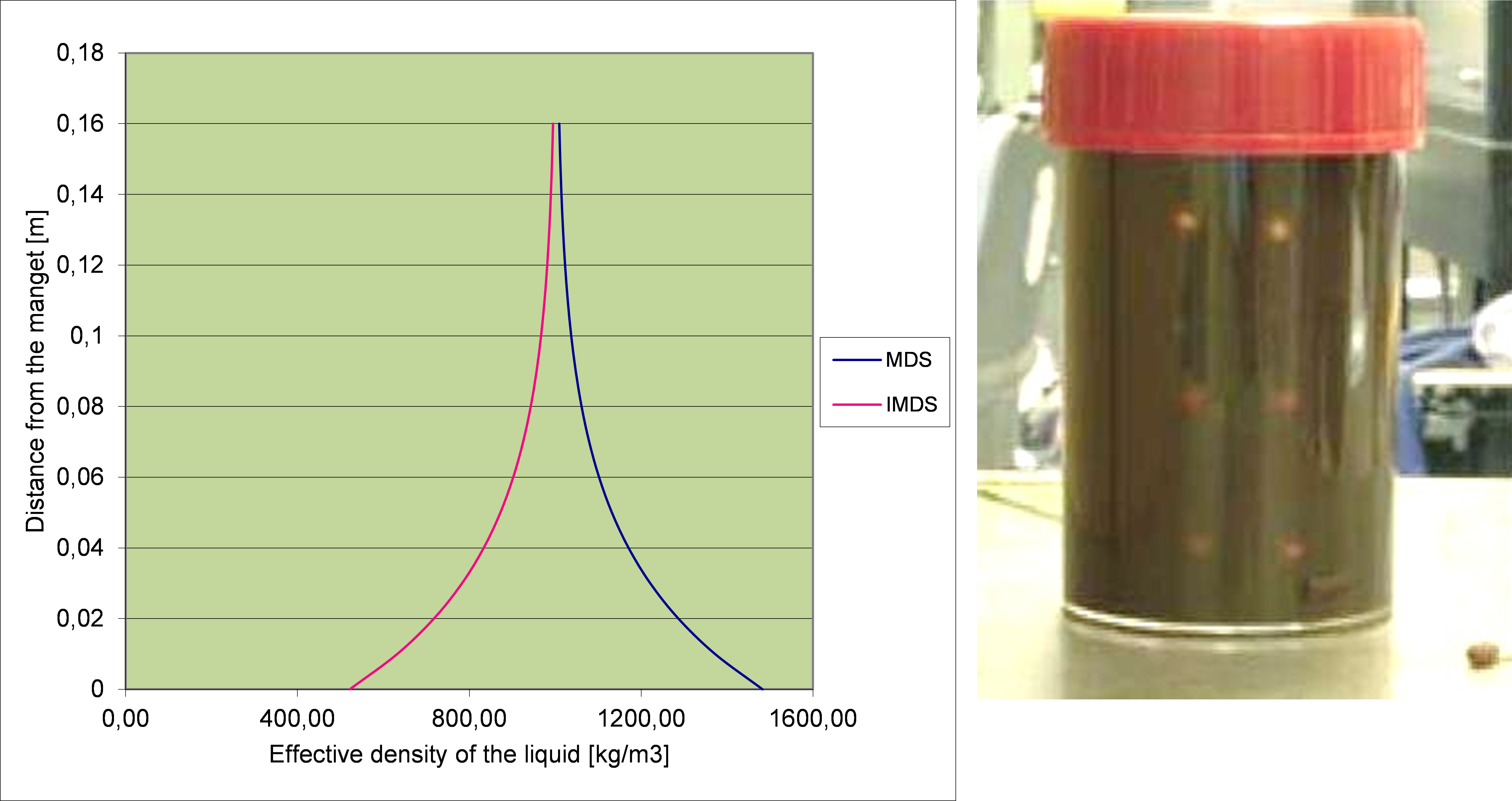
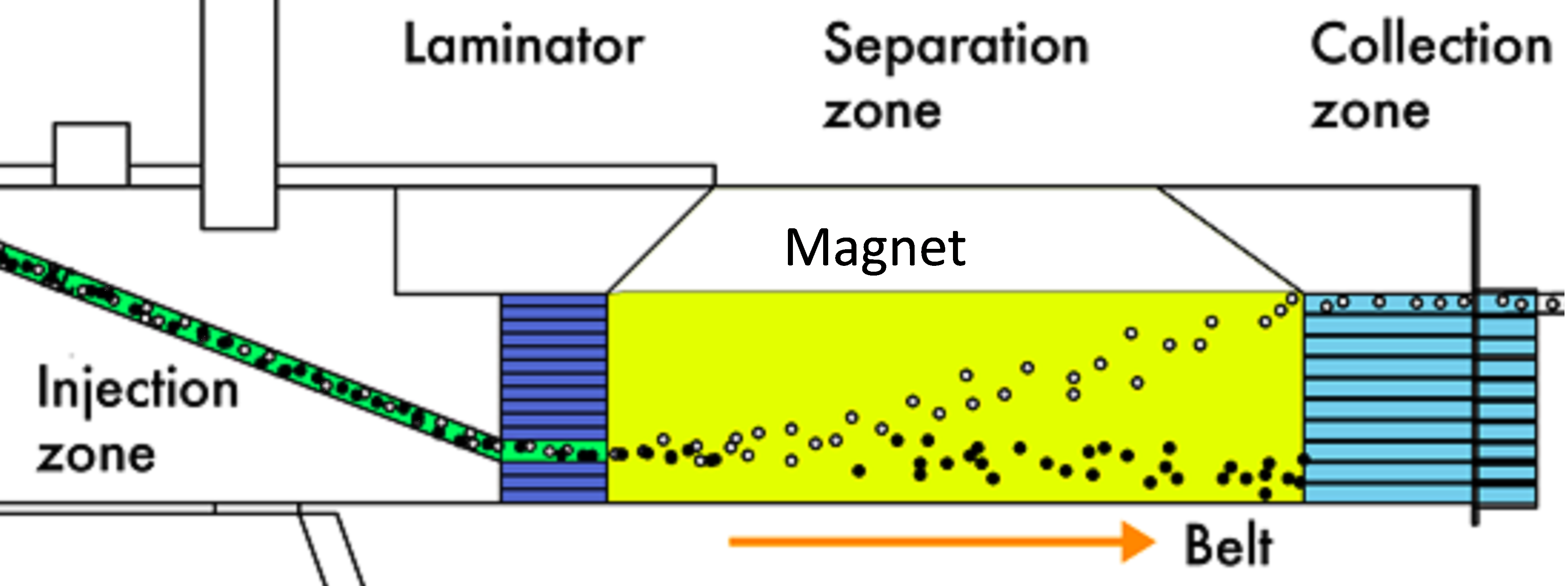
Other solutions
Sink-float:
In water: PE (950 kg/m3) from PET(1400 kg/m3);
In water + salts (two steps): PS (1030 Kg/m3), PMMA (1170 Kg/m3), PET;
In water + alcohol (two steps): PP (900 Kg/m3), LDPE (930 Kg/m3), HDPE (950 Kg/m3).
Researchers involved
Bin Hu
Seyed Sanaee
Maarten Bakker
Peter Berkhout
Francesco Di Maio
Peter Rem
Sponsors
European Commission
Partners/collaboration
Sapienza Universita’ di Roma (Prof. Giuseppe Bonifazi, Dr. Silvia Serranti)
Technical University of Denmark (Dr. Stig Olsen)
Transylvania University of Brasov (Prof. Mircea Tierean, Dr. Liana Baltes, Prof. Silvia Patachia)
Barcelona Supercomputing Centre Centro Nacional de Supercomputación (Dr. Guillaume Houzeaux, Dr. Hadrien Calmet)
Budapest University of Technology and Economics (Prof. György Marosi, Dr. Andrea Toldi, Dr. Brigitta Bozday, Dr. Katalin Bocz)
Recycling Avenue BV (Dr. Norbert Fraunholcz)
Alcufer kft (Dr. Pal Lukacs)
Urban S.A. (Mr. Cristian Lazar, Ms. Adela Giubenga)
Oldelft BV (Mr. Ruud ‘t Hoen)
DV – Tecnologie d’Avanguardia s.r.l. (Ing. Alberto Dell’Ava, Ing. Maurizio D’Agostini)
Results
The MDS W2Plastics technology is able to extract individual polymer products from the rather large mixed residue fraction (with a negative value) coming from the Near Infra-Red (NIR) sorting equipment used in Western Europe to sort expensive separately collected packaging waste. A second source of polyolefin packaging waste is in Eastern Europe, where hand pickers take rigid plastic objects directly from the flow of household waste and classify them into different types of polymers at a cost of approximately 200 euros per ton of product. One of these polymer classes consists of mixed polyolefins. The W2Plastics technology can separate this mix into PP and PE products (see Figure 2).
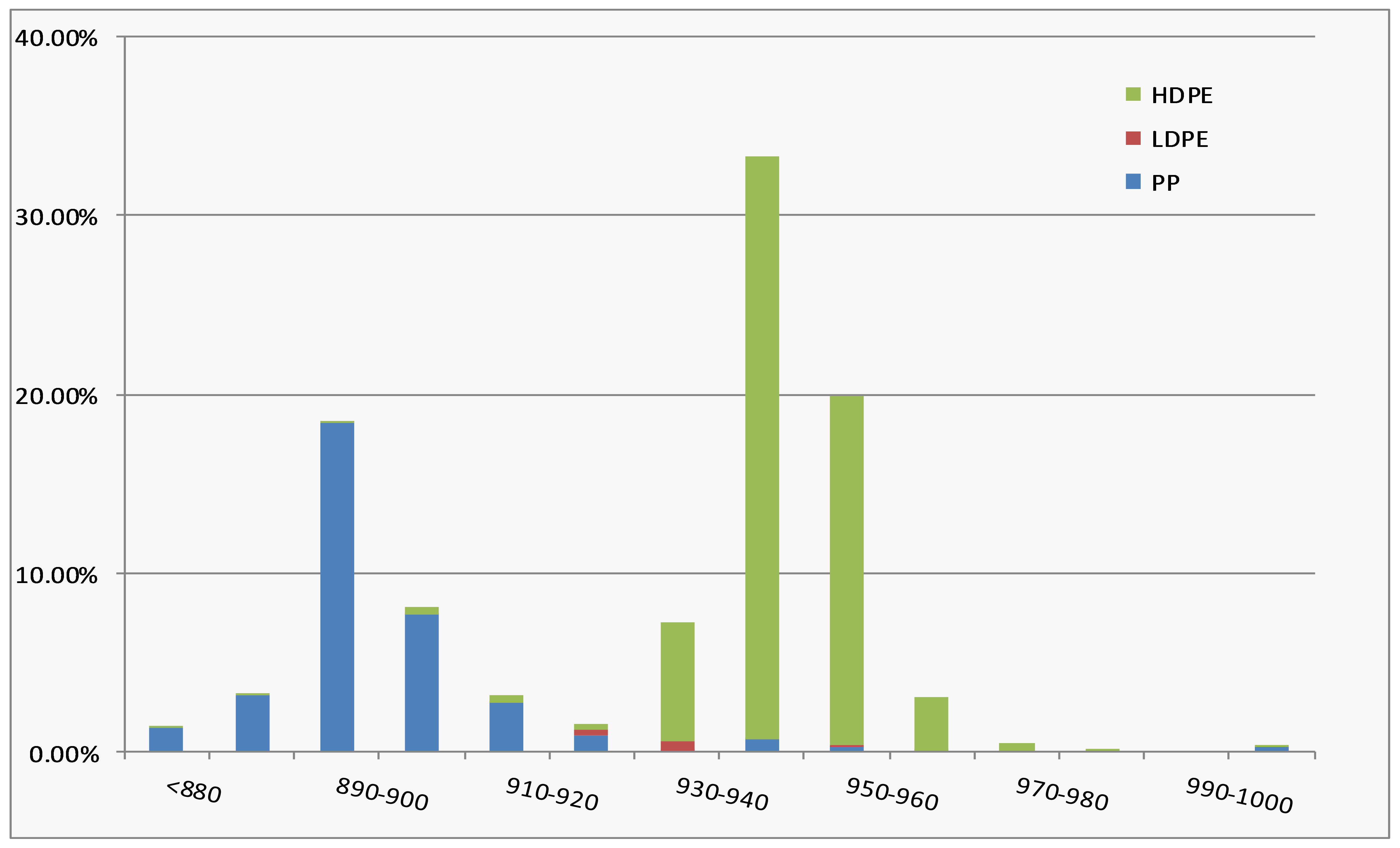
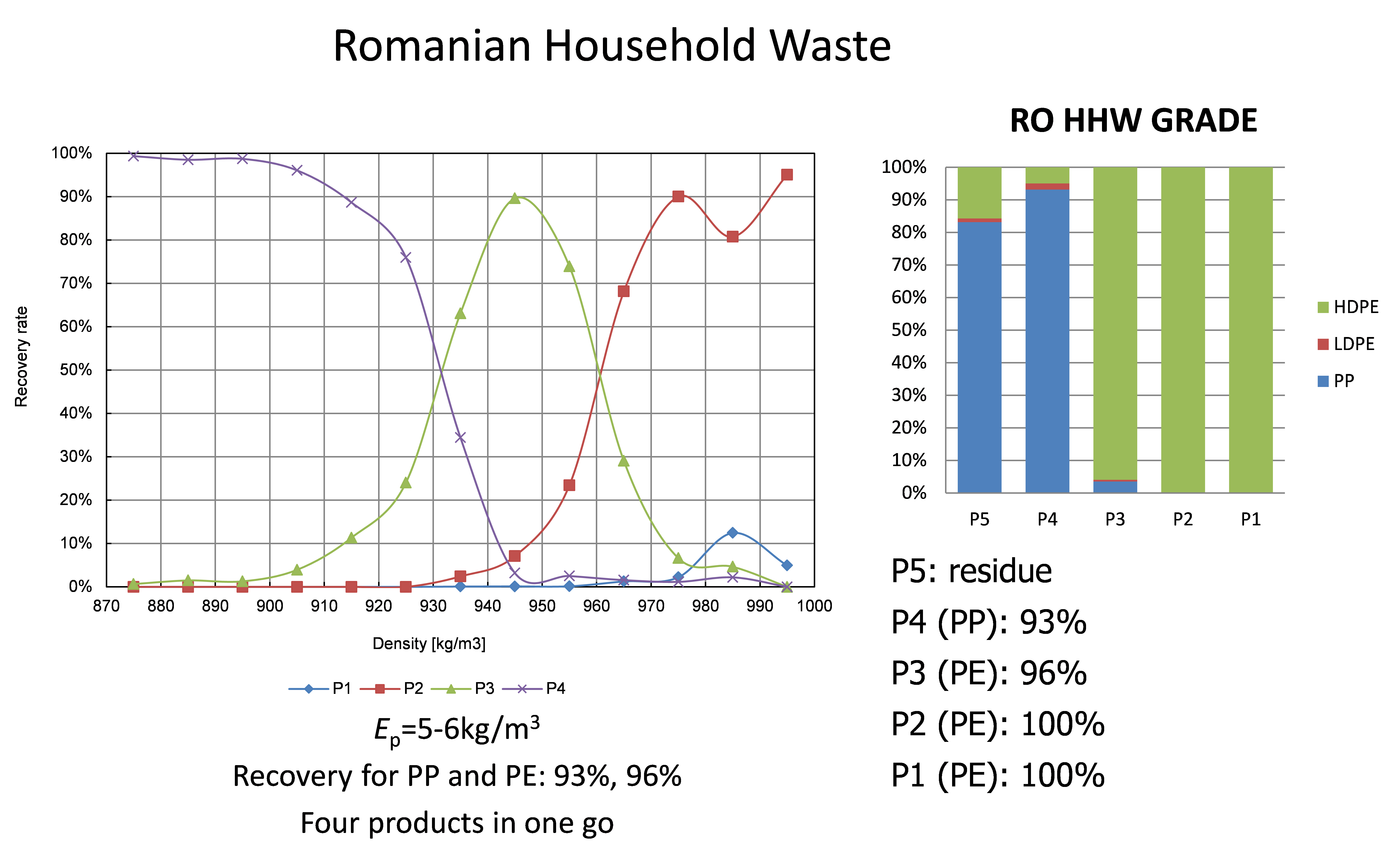

Papers
B. Hu, N. Fraunholz, P. Rem. Wetting Technologies for High-Accuracy Sink-Float Separations in Water-Based Media, The Open Waste Management Journal, 3 (2010) 71-80.
B. Hu, K. van Beek, A. Bosman, P.C. Rem, E.J. Bakker and F. Di Maio. Magnetization Control of Magnetic Liquids for Sink-Float Separations. The Open Waste Management Journal, 3 (2010) 81-89.
F. Di Maio, P.C. Rem, B. Hu, S. Serranti and G. Bonifazi. The W2Plastics Project: Exploring the Limits of Polymer Separation. The Open Waste Management Journal, 3 (2010) 90-98.
B. Hu, F. Di Maio, P.C. Rem, G.Houzeaux, H. Calmet, H. Owen. Development of Inverse Magnetic Density Separation of Polyolefin Mixtures. in: The 26th International Conference on Solid Waste Technology and Management, Philadelphia, PA, U.S.A., 2011.
B. Hu, L. Giacometti, F. Di Maio and P.C. Rem. Recycling of WEEE by Magnetic Density Separation, in: The Sixth International Conference on Waste Management and Technology. Suzhou, China, 2011.
B. Hu, S. Serranti, N. Fraunholcz, F. Di Maio, G. Bonifazi. Recycling-Oriented Characterization of Polyolefin Packaging Waste. Waste Management, 33 (2013) 574-584.
Patents and applications
Rem, P.C., Berkhout, S.P.M.
2008P00008NL
Implementation

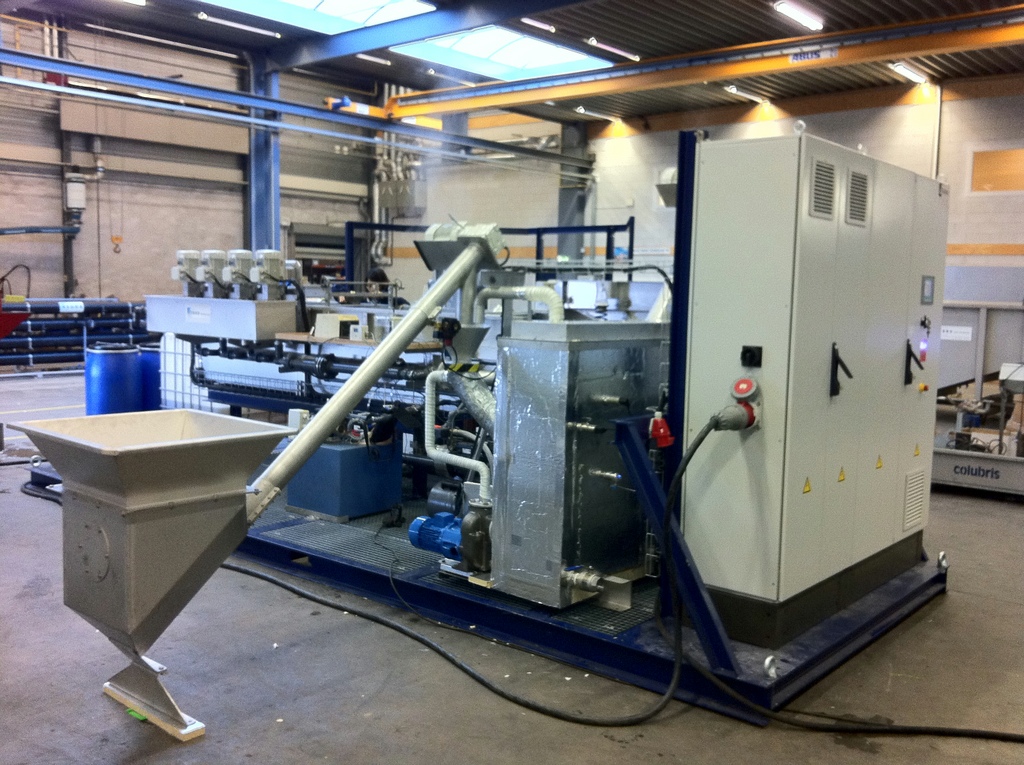
MDS separator at Winterswijk, the Netherlands.
Economic data (estimates)
Investment cost 3 tons/h polyolefins mixture units: 2.0 M€.
Per ton of rigid PP-PE mix input (East Europe case)[1]:
Costs(hand sorting, cut & wash, MDS separation, compounding): 498 €;
Revenues: 520 €.
Per ton of rigid PP-PE mix input (Dutch case)[2]:
Costs(NIR sorting, cut & wash, MDS separation, compounding): 285 €;
Revenues: 310 €.
Presentation MDS_W2Plastics_Technology
[1] For more details see Presentation
[2] For more details see Presentation